Troubleshoot and revive your home security with quick fixes for Blink Sync Module offline issues. Restore connectivity in a snap, Nothing’s more frustrating than your home security system going offline, leaving you in the dark and worrying whether everything’s okay.
The good news is, that most connectivity issues with the Sync module can be resolved fairly easily on your end. Before you call Blink support, try a few of these basic troubleshooting tips to get your system back online and peace of mind restored. The problem is often something simple like a loose wire or Wi-Fi glitch.
So take a deep breath and let’s start by checking your Wi-Fi signal and the power adapter to rule out the easy fixes. With some patience and a few minutes of DIY diagnosis, you’ll likely have your Blink system synced up and running smoothly again in no time.
What Does It Mean When Goes Blink Sync Module Offline?
When your Blink Sync Module goes offline, it means it has lost connectivity to your Blink security cameras and the Blink servers. There are a few possible reasons why your Sync Module may go offline:
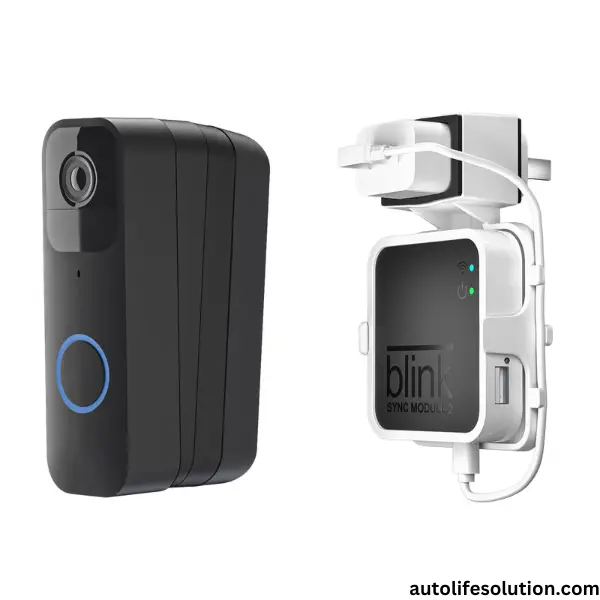
Power issues
The most common cause of a Sync Module going offline is a power interruption. Double-check that the AC adapter is fully plugged in and the outlet it’s connected to is working properly. Also, ensure the Sync Module’s power cable is securely connected to the device. If everything looks okay, try restarting your Sync Module by unplugging it for 30 seconds and then plugging it back in.
Wi-Fi problems
If your Sync Module connects to Wi-Fi, a Wi-Fi network issue could cause it to go offline. Make sure your Wi-Fi router is working properly and try restarting it. Check if other Wi-Fi-connected devices in your home are working normally. If only your Blink Sync Module offline is affected, try restarting it to re-establish the Wi-Fi connection. You may also need to reboot your Blink cameras to get them talking to the Sync Module again.
Server connectivity
Sometimes Blink servers may be temporarily unavailable, causing Sync Modules to go offline. Try restarting your Sync Module after 30 minutes to see if the connection restores. Blink aims for 99.99% uptime, so server issues are uncommon but can occur. Check the Blink System Status page to confirm there are no ongoing issues with their servers before troubleshooting further.
Outdated firmware
If your Sync Module has outdated firmware, it may go offline. Check for any available updates in the Blink app and install the latest version which often contains connectivity fixes and improvements. Updating the firmware on your Sync Module and Blink cameras can help resolve offline issues.
Additional troubleshooting
As a last resort, you may need to perform a hard reset of your Sync Module to factory default settings to refresh the connectivity. You will have to add your Sync Module and cameras back to your Blink system after a hard reset. If problems continue, it’s best to contact Blink support for further help in getting your system back online.
Common Reasons for Blink Sync Module Going Offline and Blinking Green
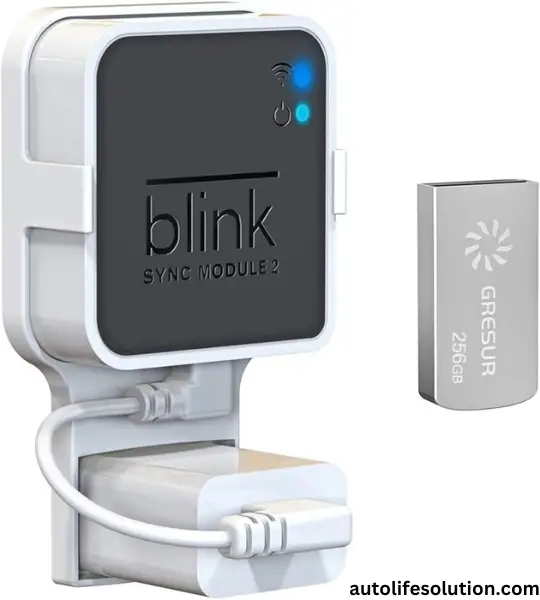
There are a few common reasons why your Blink Sync Module may go offline and start blinking green. Let’s go through some troubleshooting steps to get your sync module back online.
Interference from other devices
The Blink Sync Module communicates with your Blink cameras via a wireless network. If there are a lot of other WiFi networks or electronic devices nearby, it can potentially interfere with the signal between your sync module and cameras. Try moving the sync module farther away from things like wireless routers, cordless phones, microwaves, and baby monitors. Relocating it higher up, like on top of a bookshelf, can also help improve connectivity.
Lost WiFi connectivity
- Double-check that your WiFi router is working properly and the network is up and running.
- If your Wi-Fi went down, even briefly, it may have caused your sync module to go offline.
- Reboot or reset your Wi-Fi router and modem to reestablish the connection.
- You may need to power cycle your sync module by unplugging it for 30 seconds.
- Then plug it back in to reconnect to your Wi-Fi network.
Outdated firmware
- If it’s been a while since you last updated the firmware on your Blink Sync Module and cameras, outdated software could be causing connectivity problems.
- Update to the latest firmware for your sync module and all linked Blink cameras.
- Firmware updates often contain security patches and connectivity.
- Fixes to prevent issues like the sync module going offline.
Module placement
Where you place the Blink Sync Module in your home can impact its connectivity. It should be centrally located in your house, within WiFi range, and not blocked by dense walls. Try moving the module to a different spot, like higher up or closer to your WiFi router.
By resolving any interference, checking your WiFi connection, updating firmware and adjusting the module placement, you should be able to get your Blink Sync Module back online and blinking blue in no time. Let me know if you have any other questions!
Checking Your WiFi Connection and Router Settings

The most common reason for your Blink Sync Module to show as “offline” is an issue with your WiFi connection or router settings. Here are some things to check:
Check Your WiFi Connection
Make sure the WiFi network your module connects to is working properly. Try rebooting your WiFi router and modem. Once they restart, see if your module comes back online. If not, it may be a signal strength issue.
Move your module closer to your router to improve connectivity. You can also try changing the WiFi channel on your router to reduce interference. If possible, switch from the default settings to either channel 1, 6 or 11.
Check if other WiFi devices in your home are having connectivity problems. If so, it could indicate a network-wide issue. You may need to contact your Internet service provider for help.
Check Your Router’s Security Settings
If your WiFi connection seems fine, the problem could be with your router’s security settings. Log into your router and ensure the security mode is set to WPA2-PSK (AES). WEP and WPA are older, less secure standards that the Blink Sync Module does not support.
Make sure your WiFi password, or network key, does not contain special characters like #, $, or %. Stick to standard letters, numbers and symbols like – or _. A complex password with lots of special characters can sometimes cause connectivity issues.
See if your router’s firewall or security software is blocking the Blink Sync Module Offline. You may need to add the module as an allowed device. Check with your router manufacturer’s support for help adding approved devices.
If issues continue after checking the above, you may need to reset your Blink Sync Module to factory default settings to refresh its connection to your WiFi network. As a last resort, you can try manually setting up the module again through the Blink app. Contact Blink support for further help getting your module back online.
Sync Module Placement Tips for Optimal Connectivity
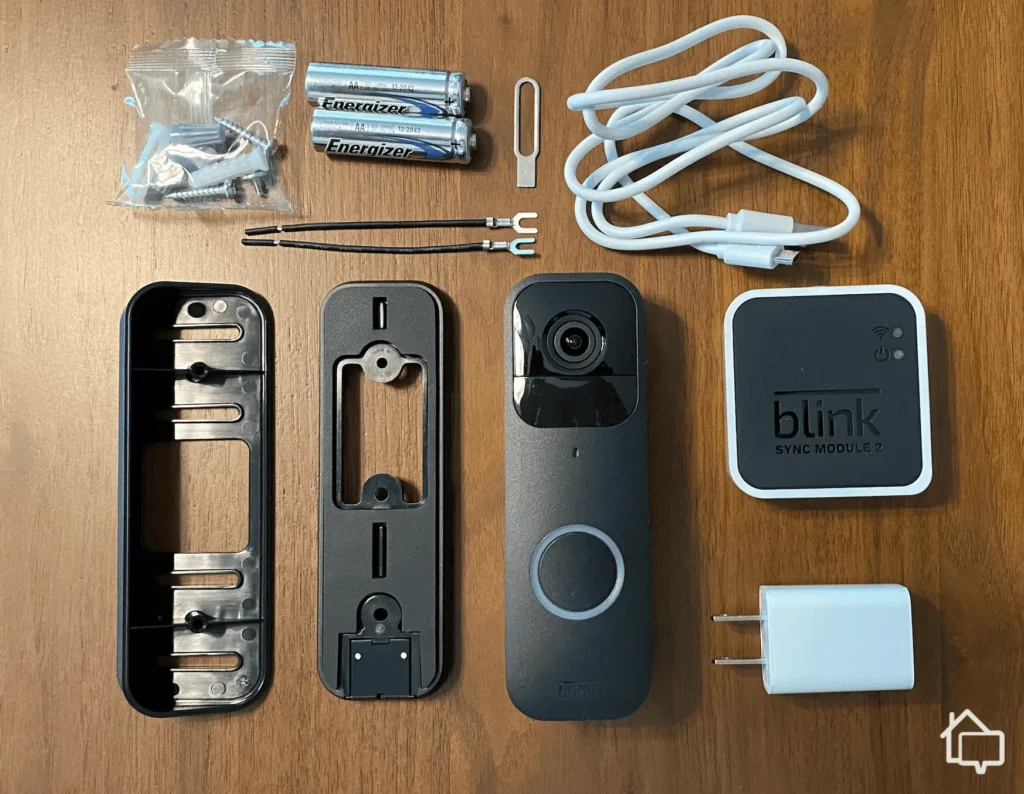
The placement of your Blink Sync Module can directly impact its connectivity and performance. For the best connectivity, consider these tips:
Elevate the Blink Sync Module Offline
Place the Sync Module at least 3 to 5 feet high, free of any obstructions. Higher is better. This provides the widest possible range and the least interference. The Sync Module emits and receives signals in a 360-degree radius, so keeping it elevated in an open area is ideal.
Centralize the Location
Try to position the Sync Module in a central location within your home. The closer it is to the centre, the easier it will be for all Blink cameras to maintain a strong connection. Corners, attics and basements should be avoided when possible.
Point Antennas Upward
If your Sync Module has external antennas, point them straight up towards the ceiling. This orientation allows for the best reception of signals to and from your Blink cameras. Tilting or angling the antennas to the side can reduce connectivity.
Avoid Metal Obstructions
Large metal objects like refrigerators, ovens, water heaters, etc. should not be placed directly in front of or behind the Sync Module. Metal can reflect and scatter the wireless signals, disrupting connectivity. Keep at least 3 to 5 feet of clearance between the Sync Module and any large metal appliances.
Test Different Locations
If you continue experiencing connectivity issues with your Blink system, it may help to test the Sync Module in different locations within your home. Even moving it just a few feet can sometimes make a difference. Find the spot that provides the strongest signal to all of your Blink cameras for the most reliable connectivity.
Trying out these placement tips for your Blink Sync Module Offline should help ensure optimal connectivity and performance for your Blink security cameras. Be patient and try different options to find what works best for your unique home setup. With some trial and error, you’ll have your Blink system connecting like a charm in no time.
Sync Module Firmware Updates to Resolve Connectivity Issues
To resolve connectivity issues with your Blink Sync Module, it’s a good idea to start by updating its firmware. Firmware updates contain patches to fix bugs, improve performance and connectivity, and enhance security.
Check Available Updates / Install the Update /Reboot Your Devices
| Check Available Updates | Install the Update | Reboot Your Devices |
| First, log in to your Blink account on the mobile app or website | If an update is found, follow the prompts to download it to your mobile device or computer | After the update has been installed, reboot your Sync Module by unplugging the power cable for 30 seconds and then plugging it back in |
| Select your Sync Module from the list of linked devices | Once downloaded, the update will automatically | You should also reboot your Blink cameras and the mobile device you use to access your Blink account |
| Tap or click on “Firmware Update Available” if you see that message | Install on your Sync Module within 24 to 48 hours | Rebooting will ensure all devices are running the latest software and firmware versions |
| Otherwise, tap or click “Check for Update” to manually search for the latest update | The module’s status light will flash blue while the update is downloading and installing | And can properly communicate with each other |
Additional Troubleshooting
If connectivity issues continue after updating your Sync Module’s firmware and rebooting your devices, here are a few other things you can try:
•Move the Sync Module closer to your Wi-Fi router. The module may have a weak Wi-Fi signal if it’s located far away or in an area with interference.
• Change your Wi-Fi password or network name (SSID). Outdated Wi-Fi info stored on the Sync Module can sometimes cause connectivity problems. Updating your Wi-Fi settings will force the module to reconnect with the new info.
• Unlink and relink your Blink cameras. Removing the cameras from your Blink account and then re-adding them can reset the connection between the cameras and the Sync Module.
• Do a hard reset of your Sync Module. As a last resort, you may need to do a factory reset of the module to refresh its software and connections. You will have to relink all of your Blink cameras after a hard reset.
Staying up-to-date with the latest firmware and software, refreshing connections, and performing the occasional reset or reboot are all part of keeping your Blink system running smoothly. With regular maintenance, you’ll be able to minimize downtime from connectivity issues and keep an eye on what matters most.
Resetting Your Blink Sync Module to Factory Settings
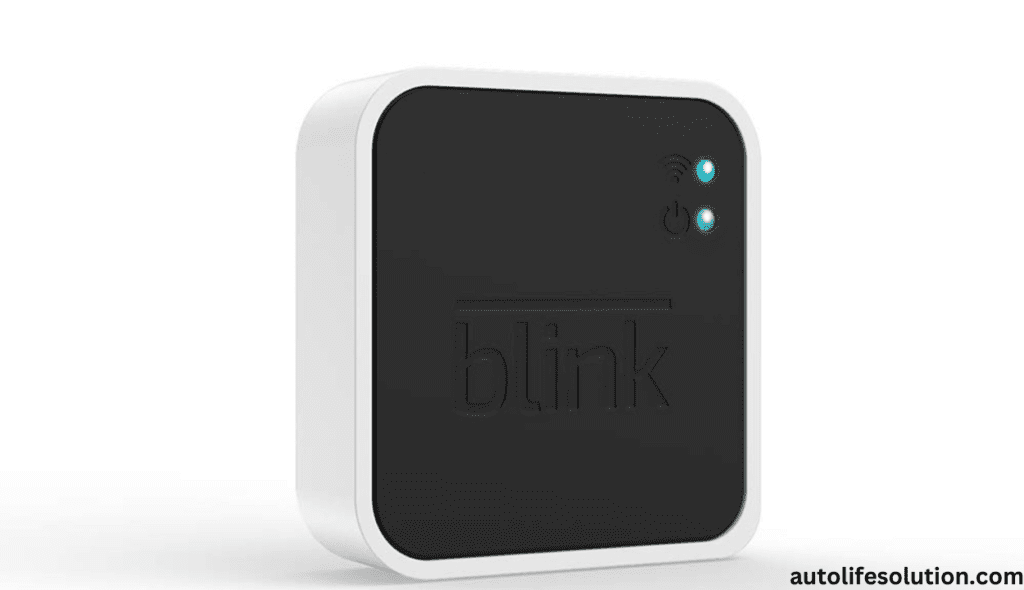
If your Blink Sync Module is offline or not connecting properly, resetting it to factory default settings may resolve connectivity issues and get it back online.
Resetting to Factory Default Settings
To reset your Blink Sync Module to factory settings:
- Locate your Blink Sync Module. It’s the small white device that’s connected to your router.
- On the back of the Blink Sync Module, press and hold the reset button for 10-15 seconds until the status light blinks red. Release the button.
- The status light will blink red, then amber, and go solid green. This indicates the reset was successful and the module is restarting.
- Once the light turns solid green, set up your Blink Sync Module again through the Blink app on your phone. Connect the module to your Wi-Fi network and router, and sync your Blink cameras.
- Your cameras may take 5-10 minutes to reconnect and sync with the module after a reset. Be patient, and the cameras should come back online and reconnect on their own.
Resetting the Blink Sync Module restores factory default settings and often fixes issues with connectivity or syncing in the Blink system. It essentially gives you a “fresh start” to set up your Blink equipment again. If issues continue after a reset, it could indicate a hardware problem with either the module, your router, or one of the Blink cameras. You may need to contact Blink support for further troubleshooting.
A factory reset is a last resort, so only perform this when necessary. You will have to set up all of your Blink equipment again from scratch, including adding cameras, customizing detection zones, and ensuring your settings are as you want them. But when connectivity is disrupted, a reset can get your Blink system back up and running so you have peace of mind about what’s happening at home.
Contacting Blink Customer Support for Further Troubleshooting
If you’ve tried the basic troubleshooting steps to fix your Blink Sync Module connectivity issues and are still experiencing problems, it’s best to contact Blink Customer Support for further help. They have the proper tools, training and access to diagnose and resolve technical issues with Blink products.
Contact Blink Support

The speediest method for arriving at Squint Help is through their live talk included on Flicker’s site or portable application. You’ll talk straightforwardly with a help specialist who can walk you through extra investigating steps intended for your arrangement and necessities. Be ready to give insights regarding your Flicker framework parts, firmware variants, switch data and the issues you’re encountering. Screen captures or brief video clasps of the issue can likewise be useful for the helping specialist.
If talk isn’t accessible or you like to address somebody via telephone, call Flicker Backing at 1-844-202-1047. Support hours are 5 am to 6 pm PST, 7 days per week. You might encounter higher than typical stand-by times, particularly during occasions, so cancelling during top hours is proposed whenever the situation allows.
Email is another choice if you want to give log records, demonstrative reports or favour correspondence recorded as a hard copy. Make an impression on support@blinksupport.com with “Squint Sync Module Issue” in the headline. Make certain to incorporate your name, telephone number, and email address related to your Squint record and a definite depiction of the issues happening. Append any significant records that could help with investigating and settling your network issues. Squint intends to answer all email requests within 24 to 48 hours, however, the goal might take extra time contingent upon the issue.
By reaching Flicker Backing through live visits, telephone or email and giving however much insight concerning what is going on as could be expected, their specialized help group will attempt to get your Squint Sync Module back on the web and associated as fast as possible. With their assistance, you’ll have returned to observing your home and property right away.
FAQs About Sync Module Going Offline and Blinking Green
One of the most widely recognized issues with the Flicker Sync Module is losing network, demonstrated by the sync module squinting green. Here is a portion of the much of time got clarification on some pressing issues and investigating tips to help get your sync module back on the web.
Why is my sync module blinking green?
A blinking green light on your sync module means it has lost connectivity to your Blink system and cameras. This could be due to:
- Wi-Fi network issues like a dropped signal or a changed password.
- The sync module was moved to a location with poor Wi-Fi coverage.
- There was a power outage that caused the sync module to reboot.
How do I fix a blinking green sync module?
There are a few steps you can try to restore connectivity:
- Power cycle the sync module. Turn off the power link for 30 seconds and attach it back in. This resets the sync module and restores the Wi-Fi association.
- Check your Wi-Fi network status. Ensure your Wi-Fi switch is working appropriately and the organization’s secret phrase has not changed. You might have to reemerge your Wi-Fi secret key on the sync module.
- Move the sync module closer to your Wi-Fi router. If possible, place the sync module in an open location central to your Blink cameras for the strongest signal.
- Update the sync module firmware. Outdated firmware can sometimes cause connectivity issues. Update your sync module to the latest version through the Blink app.
- Restart your Wi-Fi switch. If all else fails, you might have to drive cycle your Wi-Fi switch to revive the organization association. Allow a few minutes for your router and sync module to come back online.
- Contact Blink Support. If the sync module is still blinking green after trying the steps above, there may be an issue with the sync module itself. Contact Blink support for further help and diagnosis. They can also send a replacement sync module if needed.
Following these investigating tips ought to assist with getting your Squint Sync Module back on the web and associated quickly. Inform me as to whether you have any other inquiries!
Summary of Steps to Get Your Blink Sync Module Back Online
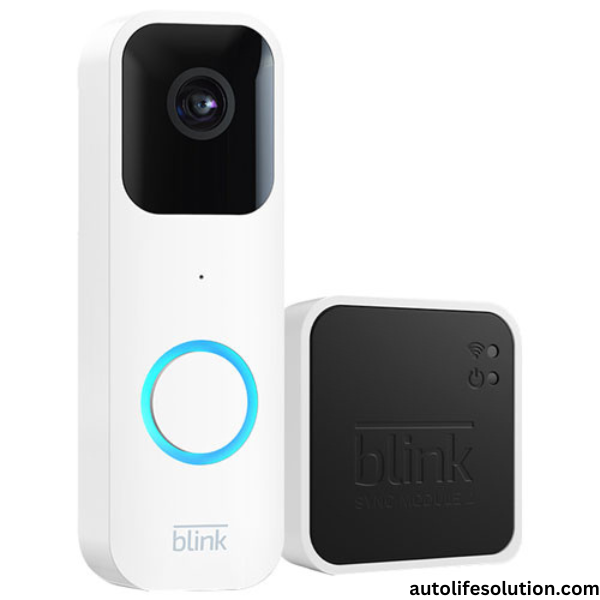
Assuming your Squint Sync Module is disconnected, don’t overreact. There are a couple of investigating steps you can attempt to get it back on the web and associated.
Restart Your Blink Sync Module Offline
- The principal thing to attempt is restarting your Squint Sync Module. This can revive the association and programming, fixing any minor errors.
- Find your Flicker Sync Module — it will either be incorporated into your Squint camera framework or a different module you’ve introduced.
- Press and hold the reset button for 10-15 seconds until the status light squints.
- Discharge the button and trust that the module will restart.
- Check assuming that the status light turns strong blue, demonstrating its back on the web.
- On the off chance that not, continue to the subsequent stage.
Check Power and Connections
Make sure your Blink Sync Module is receiving power, whether through a power cable or battery. Reseat any cables to ensure a tight connection. If using batteries, try replacing them in case they’ve drained. Also, inspect any antennas to confirm they are properly connected. A loose antenna is a common cause of connectivity issues.
Update Firmware
Obsolete firmware on your Squint Sync Module can now and again disturb the association with your cameras. Refreshing the firmware will introduce the most recent programming patches to fix any bugs. In the Squint application, go to Settings > Firmware Updates. Follow the prompts to refresh your Squint Sync Module firmware. The update interaction can require 10-15 minutes. Once complete, check assuming your module is back on the web.
Move Closer to Your Router
Assuming your Blink Sync Module associates with your Wi-Fi switch, have a go at drawing it nearer to work on signal strength. Walls, floors, and other hardware can slow down availability. Move your module inside 10-15 feet of the switch, with no significant impediments between them. Migrate it to a similar floor level as your switch if conceivable. Stand by a couple of moments to check whether it returns online in the new area.
Contact Blink Support
On the off chance that the above advances don’t determine your issue, it’s ideal to contact Flicker support. They can do additional investigating and diagnostics to decide whether your Squint Sync Module needs substitution or overhauling. Flicker goes for the gold, client support to make your framework back-ready as fast as could be expected.
Conclusion
- In conclusion, the problem of the Blink Sync Module being offline causes a widespread inconvenience and ability disruption to the functionality of the Blink security machine.
- From troubleshooting connectivity problems to making sure of the steadiness of net connections, addressing this problem calls for diligent interest and timely resolution.
- By implementing powerful troubleshooting steps, customers can attempt to restore the Sync Module’s online status, thereby safeguarding the integrity of their safety tracking.
- Additionally, exploring opportunity answers or looking for assistance from technical help may offer additional avenues for resolving this issue and restoring seamless functionality to the Blink device.
- Ultimately, by remaining proactive and knowledgeable, customers can decrease downtime and optimize the overall performance of their Blink protection setup.
Read Other Articles

4 Replies to “Blink Sync Module Offline: Troubleshoot Connectivity Issues”